Our Jeju Island Travel Essentials lays out the essential information you need to help you plan your trip to one of the most popular destinations in South Korea. No matter how frequently you travel, some questions will always need answers: What’s the weather like? How can I get from Jeju International Airport to my hotel? What currency and type of plug do I need?
We have all these answers plus other basic info about the best time to go, getting there, getting around, and a few useful travel tips. You’ll also learn about the most popular landmarks on Jeju Island such as Mount Halla, Jeju Folk Village Museum, and Manjanggul Lava-Tube Cave. It’s all compiled in this Jeju Island Travel Essentials. After reading this short and easy-to-read guide, you will be a little more prepared to start your trip to Jeju Island, South Korea.
What are the main towns and villages on Jeju Island?

Jeju is the largest island in South Korea. The volcanic island lies 90 km south of the mainland and is about 1,830 sq km in size. At its centre is Mount Halla, a shield volcano that rises 1,950 metres above sea level – the highest summit in South Korea. The island has 2 main cities: Jeju City in the north and Seogwipo in the south. Other interesting towns include Gimyeong and Seongsan.
Jeju City
The capital of the island, Jeju City is in the north-central part of the island and has a population of over 480,000. Served by the second busiest international airport in the country, Jeju City is the main arrival hub on Jejudo. It features a large choice of hotels, casinos, and tourist attractions.
Seogwipo
Seogwipo is the second-largest city on Jeju Island. It lies in the central area of the south coast of the island and has a population of over 155,000. Seogwipo is famous for its food market, the O’Sulloc tea museum, waterfalls, and volcanic caves.
Gimnyeong
Gimnyeong has one of the most popular beaches on the northeast coast of Jeju. Water activities such as scuba diving, snorkelling, windsurfing, and kayaking are extremely popular in Gimnyeong, as well as fishing and dolphin watching. In the hinterland, the highlight of the area is Manjanggul Cave.
Seongsan
Seongsan is a small fishing village on the southeast coast of Jeju Island. It’s renowned for its ‘sunrise peak’ Seongsan Ilchulbong, a 182-metre-high volcanic tuff cone that offers panoramic views. The village is also one of the last places where you can meet the haenyo (women of the sea) who catch urchins, abalone, and other seafood without scuba diving equipment.
When is the best time to travel to Jeju Island?

- Jeju has a mild subtropical climate, with a yearly average temperature of 16°C. The island, being right between the subtropical and moderate climatic zones, gets a little cold during winter, with snowfall in some areas towards the north.
- You won’t find extreme weather conditions due to Jeju’s warm sea currents. During the summer months, temperatures can go up to 28°C. Jeju also enjoys rather warmer autumns than other areas in South Korea.
- It rains up to 7 days per month in October–December. Rainfall increases from January to May with an average of 10 wet days per month. It reaches its peak in June–September with up to 13 rainy days per month. Occasional typhoons are expected around this time of the year.
- Spring (March–May) and autumn (October–November) are the best times to visit Jeju Island, due to the mild and dry weather. Winter being relatively clement is also a good time to visit.
- Summer is busy but not as popular due to unpredictable weather that can bring torrential rains. More affordable hotel prices make June–September an attractive time to visit, though.
See also
- 10 Best Local Dishes from Jeju Island

10 Best Local Dishes from Jeju Island
South Korea - 10 Best Things to Do with Kids in Jeju

10 Best Things to Do with Kids in Jeju
South Korea - 10 Best Beaches on Jeju Island

10 Best Beaches on Jeju Island
South Korea
Jeju Island basics

- Plug type: C and F
- Electricity: 220 V – 60 Hz
- Currency: South Korean won (₩)
- International dialling code: +82 64
- Emergency telephone number: 119 (fire and medical emergency), 112 (police)
How to get to my hotel in Jeju Island?

Getting to Jeju is relatively easy as the island is connected to the mainland by air and sea. Jeju International Airport receives regular flights from Busan and Seoul, as well as other international destinations such as Tokyo, Shanghai, and Beijing.
Jeju International Airport (CJU)
Travelling to Jeju by air is easy as over 20 international airlines offer regular flights to and from Jeju International Airport. The second-largest airport in South Korea, CJU lies 3 km west of Jeju City centre as the crow flies.
Free Wi-Fi is available throughout the airport. Ground transport options available are as follows:
- Taxi stands are outside the exit of Gate 3, across the terminal. Regular and Jumbo (ideal for groups) categories of taxis are available.
- Bus stops can be found in front of the terminal. Intracity, express, and intercity buses are available. As the most affordable mode of transport, it is also the slowest. If you plan to travel by bus during your stay, purchasing a T-money card is recommended for its convenience.
- Car rental agencies are found in the Rental Car House. Cross the street and follow the signs towards Gates 3 and 5. A shuttle bus will then take you to your car from there.
Ferries and boats to Jeju Island
Ferry and boat services are available if you’re travelling on a budget. Boat rides are much cheaper compared to flights, though it is slower and includes an overnight journey.
A ferry from Busan to Jeju takes about 11 hours. If you’re departing from Mokpo, travel time can be up to 6 hours. You can also board a ferry to Jeju from Wando (3 hours) and Incheon (15 hours).
photo by J. Patrick Fischer (CC BY-SA 3.0) modified
How to get around Jeju Island?

Travel tips
There are several ways of getting around Jeju Island. If you’re staying near the beach, walking and slower means of transport like bicycles or motorbikes are recommended. For longer distances, buses, taxis, and rental cars are popular options for exploring Jeju depending on your budget.
Transport cards on Jeju Island
Using a transport card is the easiest way for getting around Jeju Island by public transport and taxis. The M-pass is Jeju’s public transport card, but if you already purchased a T-money Card in Seoul, it also can be used in Jeju. Using the card saves you time and money, as well as entitles you to discounts on subway and bus tickets. Transport cards are available in convenience stores – 7-Eleven, Ministop, GS25 – and at the information desk at the airport.
Travelling by bus on Jeju Island
Buses offer the cheapest way of getting around Jeju. Each type of bus has a different colour: Express – red, Main Line – blue, Feeder Line – green, and Tourist – yellow. The bus network features over 45 lines that cover the entire island. Buses generally have information written in English at bus stops. Announcements on the buses are also done in English and Korean. Fares can be paid in cash – exact change required – or with a prepaid transport card. You exit the bus from the rear door.
Taking a taxi on Jeju Island
The most convenient way of getting around by taxi in Jeju is by using Global Taxi services. Their drivers speak foreign languages such as English, Chinese, or Japanese. Simply call 1899-4314 and press 1 for English, 2 for Chinese, and 3 for Japanese.
If you can’t get a Global Taxi, a regular taxi will do and they can easily be flagged down on the streets. As most taxi drivers don’t speak English, having your destination address written in Korean on a piece of paper will help. Once in the taxi, you can also call this translation service: 080-840-0505, followed by the number of your language: 1 for English, 2 for Japanese, 3 for Chinese, 4 for Russian, 5 for Spanish, 6 for German, and 7 for French. The interpreter will help tell the driver your destination.
Renting a car/motorbike on Jeju Island
Renting a car is a recommended way for conveniently exploring Jeju. The island has relatively pleasant road conditions, making it safe for visitors to drive around the island. Booking your rental car in advance is preferable. For renting a car, you’ll need to be 21 years old and have an international drivers’ licence in addition to your foreign drivers’ licence of over 1 year. If you don’t plan to travel long distances – the island is 75 km wide – a cheaper alternative is to rent a motorcycle.
Riding a bicycle on Jeju Island
If you’re staying within Jeju City’s centre or a beach area, cycling is a good way of getting around. The mild weather and safe traffic make for a comfortable experience on the island. Many bike rental shops can be found in Jeju City such as Jeju Island Bicycle Rental Treasure Island Hiking (+82 (0)10-4582-8240), Bike Trip (+82 (0)64-744-5990), and Box and Bike (+82 (0)64-722-8419).
What are the main annual events on Jeju Island?

Jeongwol Daeboreum Fire Festival
- What: The Jeongwol Daeboreum Fire Festival marks the end of the harvest. It displays the burning of leftover grass in the fields to renew the greens and eliminate vermin. The festival features folk games, markets, dances, and concerts.
- When: March
- Where: Saebyeol Oreum
Jeju Canola Flower Festival
- What: The blossom of canola flowers marks the start of spring in Jeju. Held conjointly with the cherry blossom season, it attracts a crowd of visitors who enjoy a stroll on the hills of Gasi-ri covered by bright yellow flowers. Traditional festive events are organised to entertain visitors.
- When: April
- Where: Gasi-ri, Pyoseon-myeon in Seogwipo-si
Jeju Olle Walking Festival
- What: Jeju Olle Walking Festival takes you on a tour of the island on foot from one village to another. There’s a total of 21 routes, each of them involving between 3 and 6 hours of walking. Festivities include the sampling of local specialities at the end of each day.
- When: November
- Where: Around Jeju
What are the main landmarks on Jeju Island?

Mount Halla
Mount Halla (Hallasan in Korean) is the highest mountain in Korea at 1,950 metres above sea level. The mountain features many trails, each of them with a different degree of difficulty and length. Access to some areas may be restricted depending on the season. Check the visitor information on the National Park website when planning your visit.
Jeju Folk Village Museum
The Jeju Folk Village Museum represents the island’s rich cultural heritage and folklore. It’s built over an area of 15 hectares and features around 117 traditional houses. Among the many artefacts on display here include thousands of folk items made from wood, iron, and bamboo.
Manjanggul Lava-Tube Cave
The UNESCO-listed Manjanggul Lava-Tube Cave spans a total of 9 km with only about 1 km open to the public. It’s one of the longest lava tubes in the world. The tunnels are the result of lava activity in the region over time and can be up to 30 metres in height at several sections.
Jeju National Museum
Jeju National Museum is a great destination if you’re travelling to Jeju as a family with kids in tow. Browse the exhibits and artefacts detailing Jeju's history and culture and join in on various experience programmes to learn more about the wonders of the island.
This article includes opinions of the Go Guides editorial team. Hotels.com compensates authors for their writings appearing on this site; such compensation may include travel and other costs.
Start planning your trip
Where to stay in Jeju City
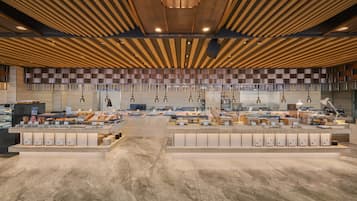
Amber Pure Hill Hotels & Resorts Jeju
Amber Pure Hill Hotels & Resorts Jeju

Maison Glad Jeju
Maison Glad Jeju
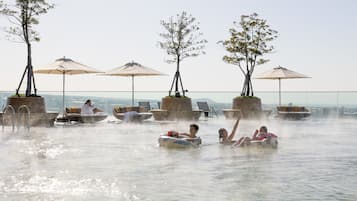
Grand Hyatt Jeju
Grand Hyatt Jeju

Shilla Stay Plus Iho Tewoo Ocean Front
Shilla Stay Plus Iho Tewoo Ocean Front
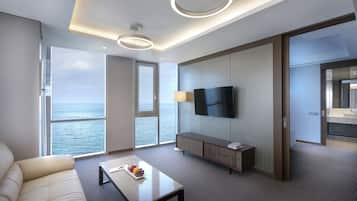
Hotel RegentMarine
Hotel RegentMarine

Ecoland Hotel
Ecoland Hotel
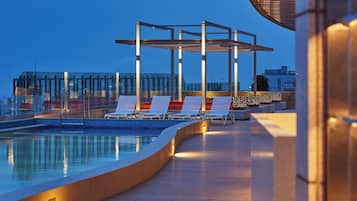
Lotte City Hotel Jeju
Lotte City Hotel Jeju
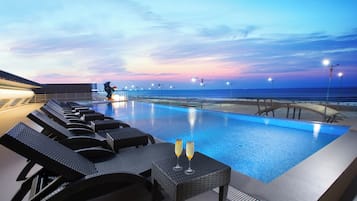
Hotel Whistlelark Jeju
Hotel Whistlelark Jeju

Shilla Stay Jeju Airport
Shilla Stay Jeju Airport
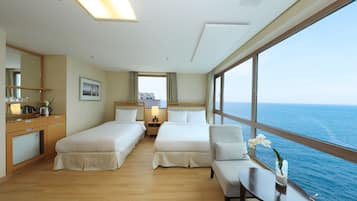
Ocean Suites Jeju Hotel
Ocean Suites Jeju Hotel
Related stories
- 10 Best Local Dishes from Jeju Island

10 Best Local Dishes from Jeju Island
South Korea - 10 Best Things to Do with Kids in Jeju

10 Best Things to Do with Kids in Jeju
South Korea - 10 Best Beaches on Jeju Island

10 Best Beaches on Jeju Island
South Korea - 9 Great Restaurants in Jeju Island

9 Great Restaurants in Jeju Island
South Korea - 10 Best Natural Wonders of Jeju Island

10 Best Natural Wonders of Jeju Island
South Korea - 10 Best Jeju Island Nightlife

10 Best Jeju Island Nightlife
South Korea - 10 Best Places Where Locals Love to Go in Jeju Island

10 Best Places Where Locals Love to Go in Jeju Island
South Korea - 9 Things to Do on Jeju Island When it Rains

9 Things to Do on Jeju Island When it Rains
South Korea
